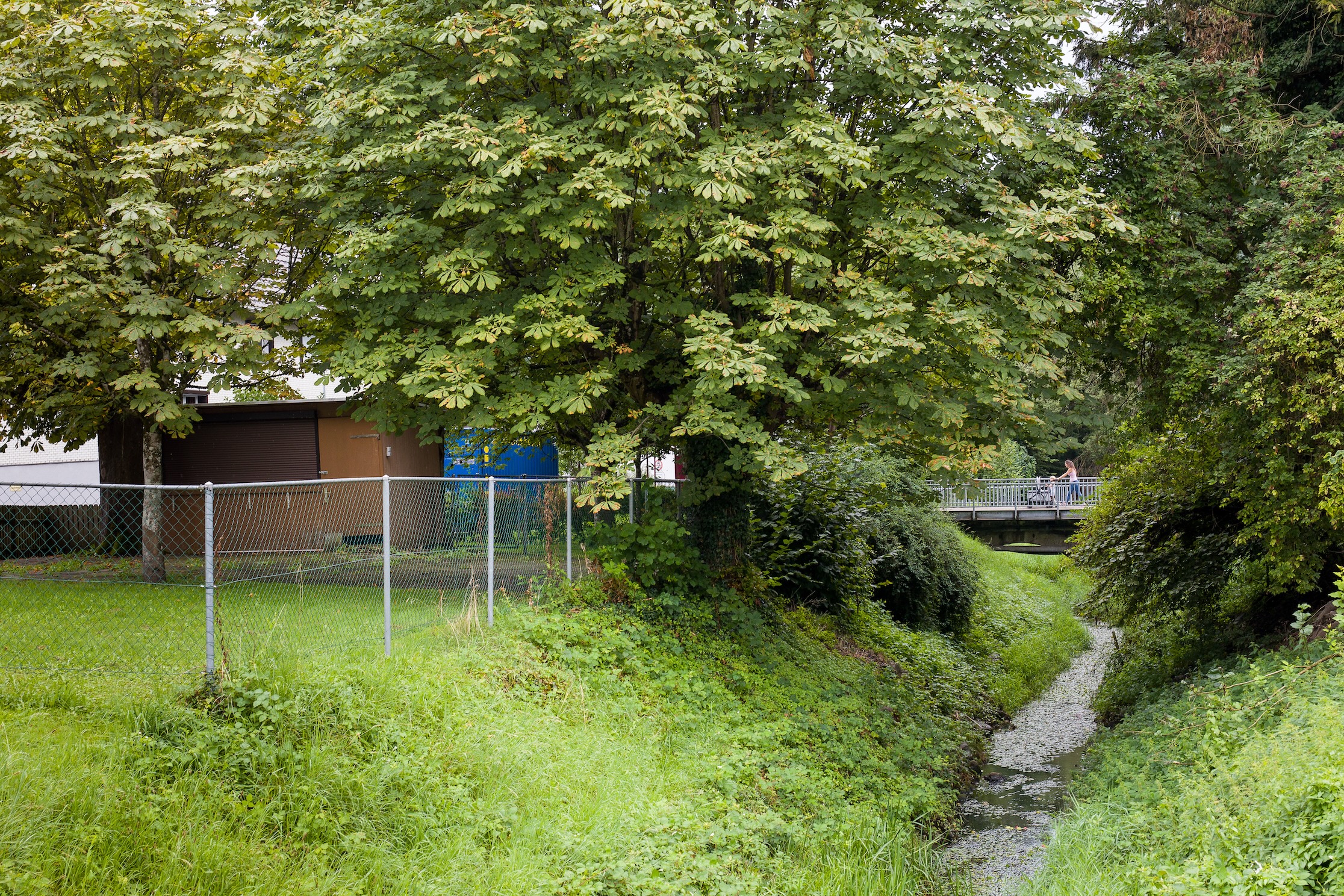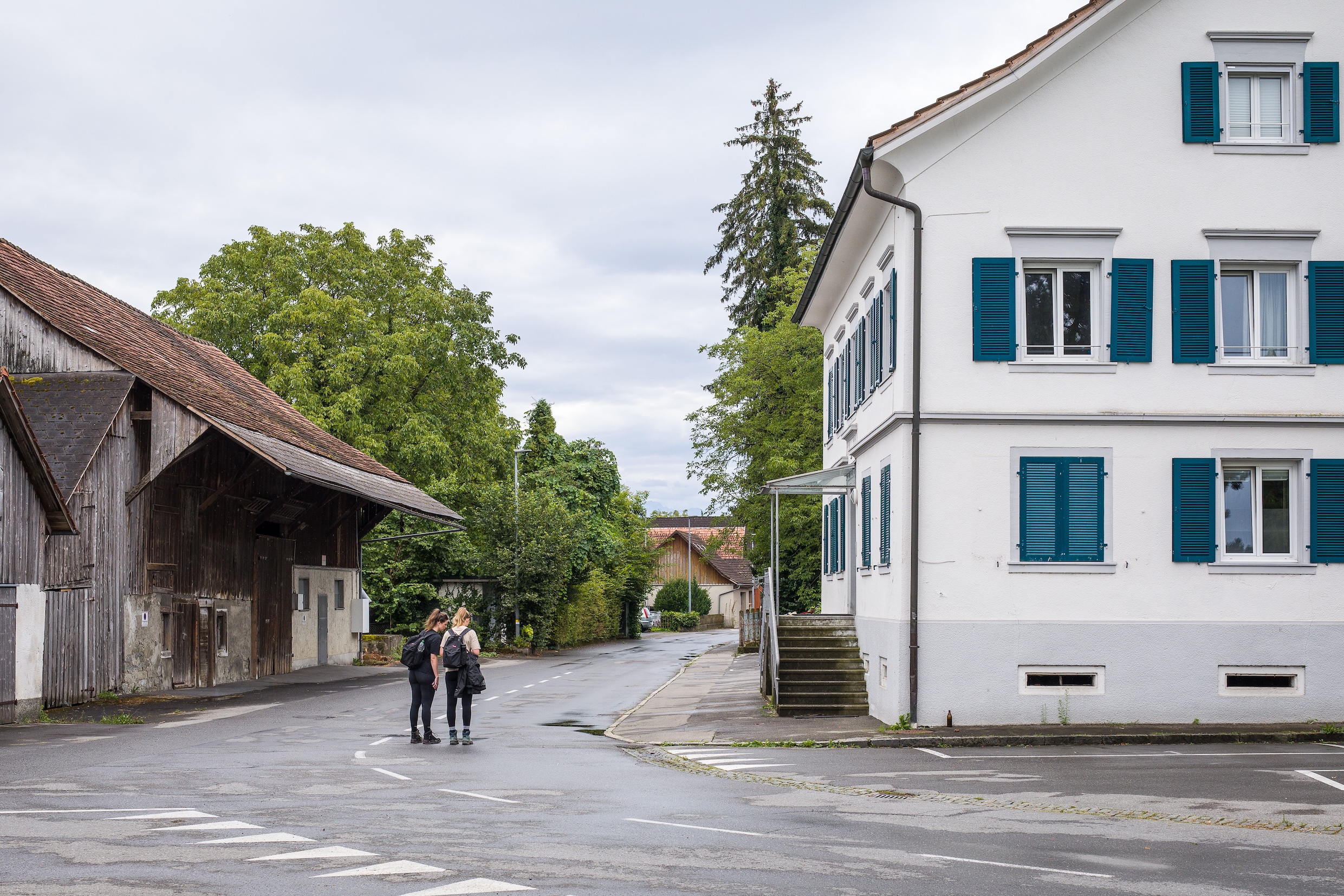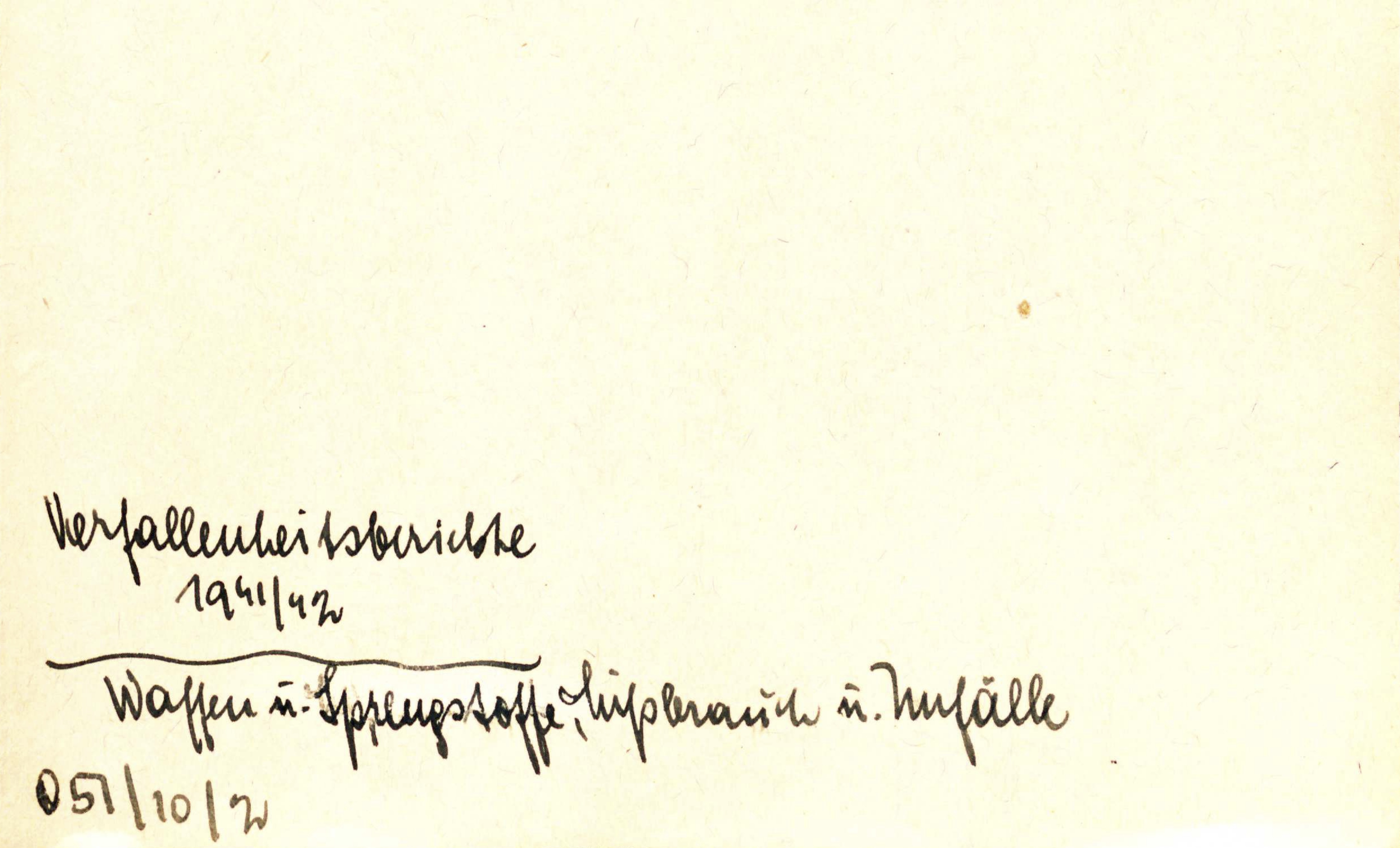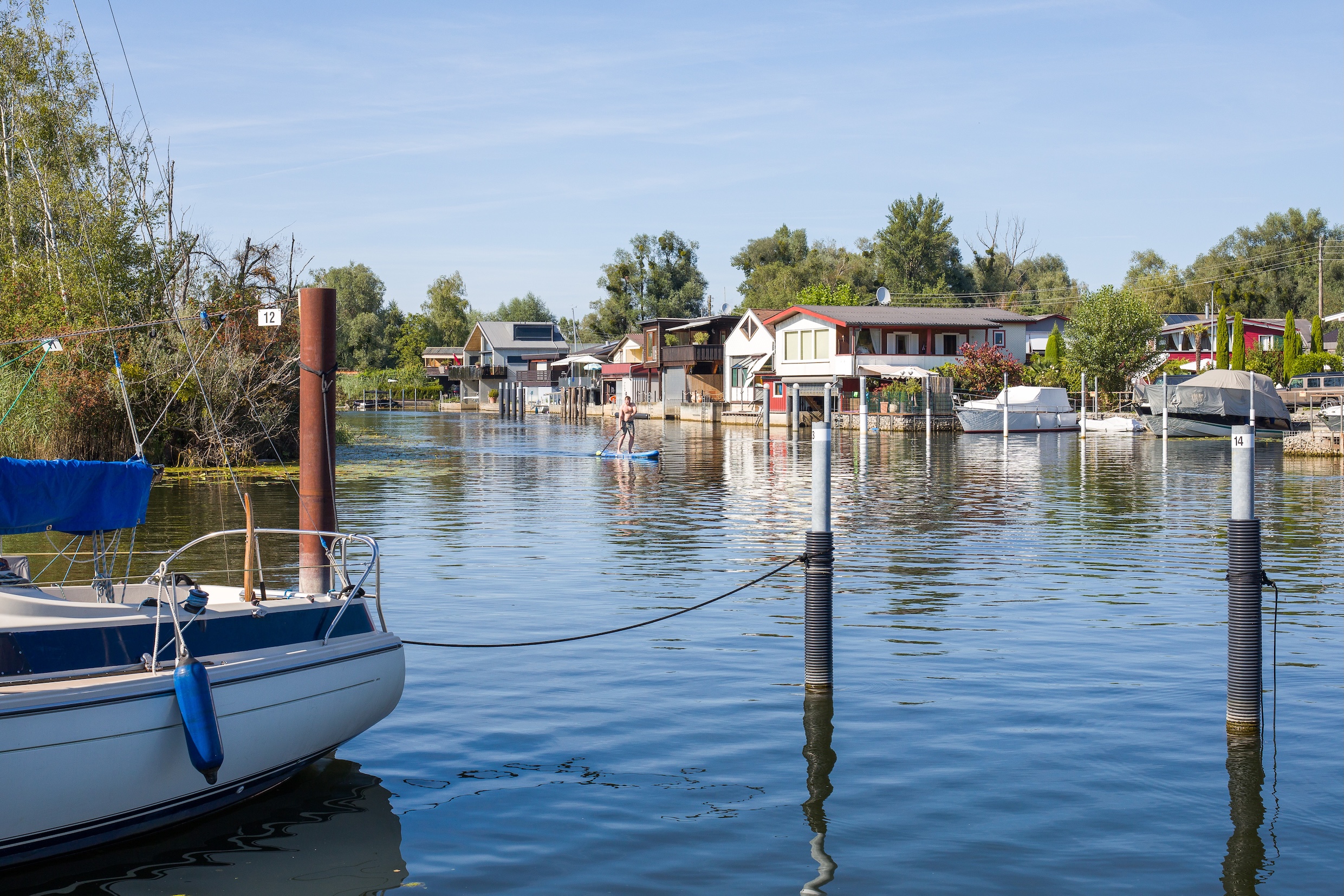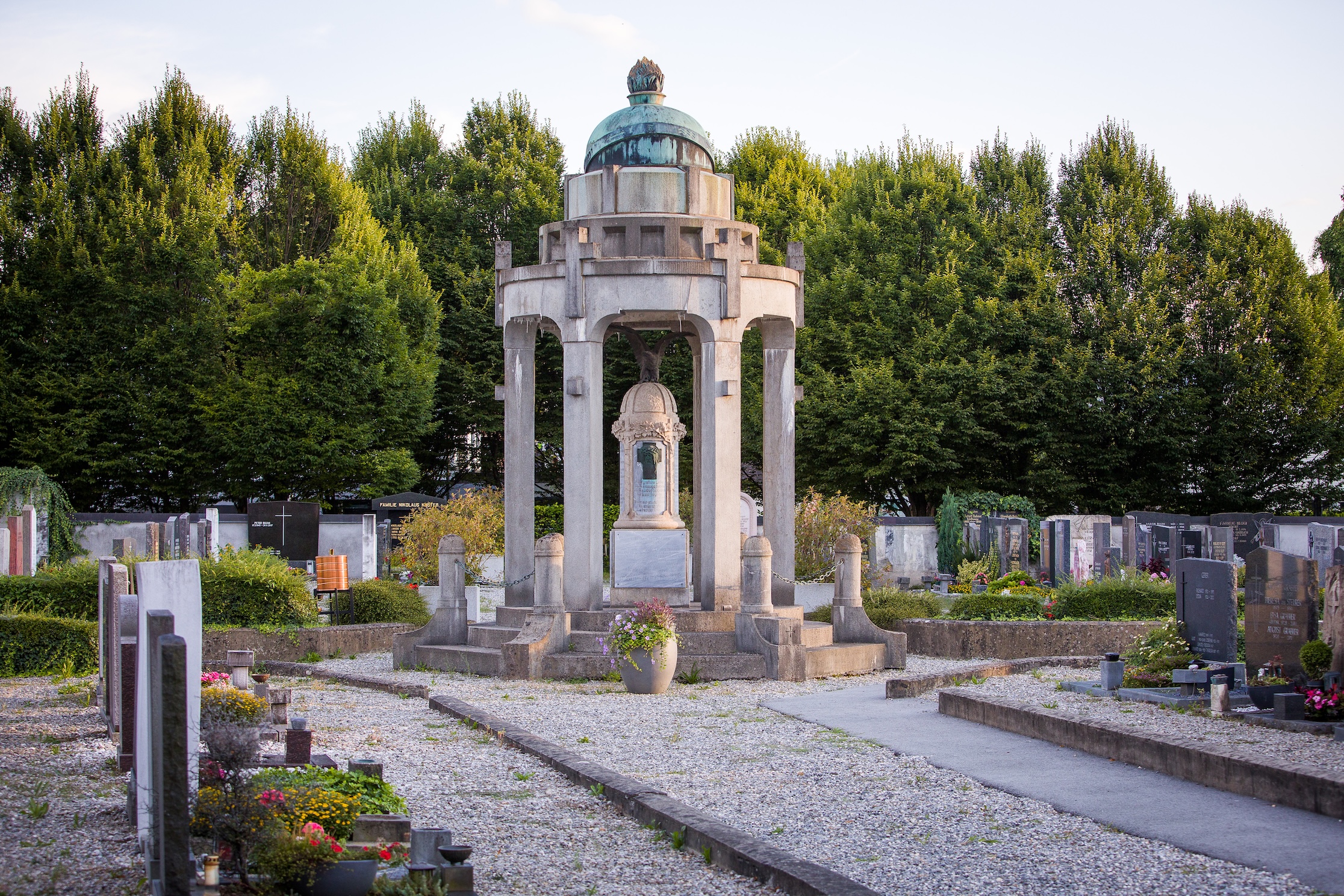Franciszek Mędrala and Julian Iwaniszyn> August 22, 1942
8a Franciszek Mędrala and Julian Iwaniszyn
“Subject: Use of weapons resulting in death”. Franciszek Mędrala and Julian Iwaniszyn
Fußach, August 22, 1942
As everywhere in Vorarlberg, forced laborers from Eastern Europe were also deployed in Fußach, for example at the Ochsenreiter brickworks, where a separate camp was set up for them, or at the water cooperative, to which 35 so-called “Eastern workers” were transferred from Hohenems. Forced laborers from Poland, Ukraine and Russia were also employed in agriculture. They had become an everyday part of the war economy.
On the morning of August 22, 1942, assistant border guard Bertsch becomes aware of two suspicious men at the Fußach gondola harbor, not far from Lake Constance. As he approaches, the two men try to escape.
Bertsch calls after them: “Stop, border guard!”. Even three shots do not stop them. But Bertsch manages to catch up with one of them and arrest him. The auxiliary border customs officers, known as “Higa” men for short, Vochazer and Schaller take up the pursuit of the second, who desperately tries to hide in the tall reeds. But he too is caught and arrested.
“The two were questioned at the customs inspection office,” it is stated a day later in the report of the Höchst gendarmerie post to the district administrator of the Bregenz district, “whereby the personal identification was unsuccessful because the detainees had no identity papers with them and allegedly could not speak German.”[1]
A short time later, the “Higa” men learn that the two of them are wanted Polish forced laborers who, together with other so-called “civilian workers” and forced laborers, left their jobs in Kempten on August 13 to escape to Switzerland.
Julian Iwaniszyn, who now called himself Josef Siroka, and Franciszek Mędrala, born in 1916 in Wielkie Drogi, met in Leipzig. They were employed there in an iron foundry, officially as “civilian workers”. But the distinction between this and forced labor is unclear. On June 22, 1942, Mędrala is listed as a “fugitive” in Leipzig.
On June 26, he is instead registered with the employment office in Kempten im Allgäu.
He is now working in the iron foundry of Röhrenwerke Johann Biechteler, just like Julian Iwaniszyn and other Polish forced laborers. They were housed in a former Catholic journeyman's house.
On June 28, Iwaniszyn and Mędrala made their first escape to Vorarlberg, attempting to cross the railroad bridge from Lustenau to St. Margrethen on the night of July 5. However, they are rounded up by border guards and taken to the police prison in Bregenz. On July 16, they make another futile attempt to escape together with two Czech cellmates. On August 7, they are transferred back to Kempten. They are still considered a valuable workforce.
But a few days after their return to Kempten, they try again. Now Tadäus Kwiecien, Czesław Plusa, Piotr Papuga, Henrik Sowa, Piotr Kalicki and Stanisław Czyz also join them. The youngest of them is seventeen years old.
Not one of them is lucky, they are all arrested - apparently in different places in Vorarlberg and one of them in Tyrol - and sent to prison in Feldkirch.
Only one of them is not: Franciszek Mędrala. The Höchst gendarmerie post reports on his fate in Fußach on August 23, 1942:
“As the interrogation of the two had been unsuccessful, they were to be taken to the border police station in Bregenz. When they were to be taken away at noon, Franz Madrella (sic!) jumped out of the open window of the customs office in Fussach and fled into the village. Madrella was pursued about 140 meters by customs secretary Grutsch and the Higa men Hertle and Beer. Beer fired 2 carabine shots into the ground and Hertle fired 3 pistol shots at the fugitive, but without striking him.
The fugitive managed to escape into the beer hall of the Schiffle inn in Fussach. At the moment when the fugitive jumped out of the window of the beer hall, Hertle fired 1 pistol shot and Beer fired 2 carabine shots at the fugitive. After firing these shots, he collapsed dead.”[2]
Mędrala is buried next to the Fußach cemetery, at the side entrance of the old church. The others are to be sent to the People's Court in Nuremberg. In April and May 1943, they are transferred from Feldkirch to the infamous “Volksgerichtshof”. They are accused of planning to join the Polish Legion, enough to finally be sentenced to death on May 20 and 21.
This is what the verdict says:
“As Poles, they deliberately harmed the welfare of the German people by maliciously leaving their jobs in Kempten, factories that were important for the fighting or for the war effort, and by seeking to withdraw their labor from the German people by escaping abroad.” And above all, they had “pursued the goal of fighting on the enemy side with weapons in their hands and putting the prepared high treason into practice.”[3]
On June 7 and 15, 1943, they are transferred to Munich-Stadelheim. Piotr Kalicki, Stanisław Czycz and Julian Iwaniszyn were executed by guillotine on August 12. Six weeks later, on September 22, 1943, Piotr Papuga, Henrik Sowa, Czesław Plusa and Tadäus Kwiecien were executed too.
Franciszek Mędrala was not the only forced laborer to die in Fußach.
The escape attempt of Woiziech Saidlowski, who had been transferred to the Ochsenreiter brickworks on April 12, 1943, also ended fatally: his body was found in the Old Rhine near Gaißau on April 23, 1944.
Today, only the water-filled clay pits on the edge of the village bear witness to the once flourishing brick production in Fußach. And since 2025 a memorial commemorates the fate of the forced laborers.
[1] Gendarmeriepost Höchst to the District Adminstrator of Bregenz, August 23, 1942, in: „Vorfallenheitsberichte 1941/1942“, LR Bregenz 051-10-2 M 34, Vorarlberger Landesarchiv, Bregenz
[3] Death sentence against Piotr Kalicki, Stanisław Czycz, Czeclav Plusa, Tadäus Kwiecien, Piotr Papuga, Henrik Sowa and Julian Iwaniszyn, May 20 and 21, 1943, 1. Senat of the People’s Court (Volksgerichtshof) in Nürnberg, Bundesarchiv Koblenz, BArch, R 3017/11305.
8a Franciszek Mędrala and Julian Iwaniszyn
“Subject: Use of weapons resulting in death”. Franciszek Mędrala and Julian Iwaniszyn
Fußach, August 22, 1942
As everywhere in Vorarlberg, forced laborers from Eastern Europe were also deployed in Fußach, for example at the Ochsenreiter brickworks, where a separate camp was set up for them, or at the water cooperative, to which 35 so-called “Eastern workers” were transferred from Hohenems. Forced laborers from Poland, Ukraine and Russia were also employed in agriculture. They had become an everyday part of the war economy.
On the morning of August 22, 1942, assistant border guard Bertsch becomes aware of two suspicious men at the Fußach gondola harbor, not far from Lake Constance. As he approaches, the two men try to escape.
Bertsch calls after them: “Stop, border guard!”. Even three shots do not stop them. But Bertsch manages to catch up with one of them and arrest him. The auxiliary border customs officers, known as “Higa” men for short, Vochazer and Schaller take up the pursuit of the second, who desperately tries to hide in the tall reeds. But he too is caught and arrested.
“The two were questioned at the customs inspection office,” it is stated a day later in the report of the Höchst gendarmerie post to the district administrator of the Bregenz district, “whereby the personal identification was unsuccessful because the detainees had no identity papers with them and allegedly could not speak German.”[1]
A short time later, the “Higa” men learn that the two of them are wanted Polish forced laborers who, together with other so-called “civilian workers” and forced laborers, left their jobs in Kempten on August 13 to escape to Switzerland.
Julian Iwaniszyn, who now called himself Josef Siroka, and Franciszek Mędrala, born in 1916 in Wielkie Drogi, met in Leipzig. They were employed there in an iron foundry, officially as “civilian workers”. But the distinction between this and forced labor is unclear. On June 22, 1942, Mędrala is listed as a “fugitive” in Leipzig.
On June 26, he is instead registered with the employment office in Kempten im Allgäu.
He is now working in the iron foundry of Röhrenwerke Johann Biechteler, just like Julian Iwaniszyn and other Polish forced laborers. They were housed in a former Catholic journeyman's house.
On June 28, Iwaniszyn and Mędrala made their first escape to Vorarlberg, attempting to cross the railroad bridge from Lustenau to St. Margrethen on the night of July 5. However, they are rounded up by border guards and taken to the police prison in Bregenz. On July 16, they make another futile attempt to escape together with two Czech cellmates. On August 7, they are transferred back to Kempten. They are still considered a valuable workforce.
But a few days after their return to Kempten, they try again. Now Tadäus Kwiecien, Czesław Plusa, Piotr Papuga, Henrik Sowa, Piotr Kalicki and Stanisław Czyz also join them. The youngest of them is seventeen years old.
Not one of them is lucky, they are all arrested - apparently in different places in Vorarlberg and one of them in Tyrol - and sent to prison in Feldkirch.
Only one of them is not: Franciszek Mędrala. The Höchst gendarmerie post reports on his fate in Fußach on August 23, 1942:
“As the interrogation of the two had been unsuccessful, they were to be taken to the border police station in Bregenz. When they were to be taken away at noon, Franz Madrella (sic!) jumped out of the open window of the customs office in Fussach and fled into the village. Madrella was pursued about 140 meters by customs secretary Grutsch and the Higa men Hertle and Beer. Beer fired 2 carabine shots into the ground and Hertle fired 3 pistol shots at the fugitive, but without striking him.
The fugitive managed to escape into the beer hall of the Schiffle inn in Fussach. At the moment when the fugitive jumped out of the window of the beer hall, Hertle fired 1 pistol shot and Beer fired 2 carabine shots at the fugitive. After firing these shots, he collapsed dead.”[2]
Mędrala is buried next to the Fußach cemetery, at the side entrance of the old church. The others are to be sent to the People's Court in Nuremberg. In April and May 1943, they are transferred from Feldkirch to the infamous “Volksgerichtshof”. They are accused of planning to join the Polish Legion, enough to finally be sentenced to death on May 20 and 21.
This is what the verdict says:
“As Poles, they deliberately harmed the welfare of the German people by maliciously leaving their jobs in Kempten, factories that were important for the fighting or for the war effort, and by seeking to withdraw their labor from the German people by escaping abroad.” And above all, they had “pursued the goal of fighting on the enemy side with weapons in their hands and putting the prepared high treason into practice.”[3]
On June 7 and 15, 1943, they are transferred to Munich-Stadelheim. Piotr Kalicki, Stanisław Czycz and Julian Iwaniszyn were executed by guillotine on August 12. Six weeks later, on September 22, 1943, Piotr Papuga, Henrik Sowa, Czesław Plusa and Tadäus Kwiecien were executed too.
Franciszek Mędrala was not the only forced laborer to die in Fußach.
The escape attempt of Woiziech Saidlowski, who had been transferred to the Ochsenreiter brickworks on April 12, 1943, also ended fatally: his body was found in the Old Rhine near Gaißau on April 23, 1944.
Today, only the water-filled clay pits on the edge of the village bear witness to the once flourishing brick production in Fußach. And since 2025 a memorial commemorates the fate of the forced laborers.
[1] Gendarmeriepost Höchst to the District Adminstrator of Bregenz, August 23, 1942, in: „Vorfallenheitsberichte 1941/1942“, LR Bregenz 051-10-2 M 34, Vorarlberger Landesarchiv, Bregenz
[3] Death sentence against Piotr Kalicki, Stanisław Czycz, Czeclav Plusa, Tadäus Kwiecien, Piotr Papuga, Henrik Sowa and Julian Iwaniszyn, May 20 and 21, 1943, 1. Senat of the People’s Court (Volksgerichtshof) in Nürnberg, Bundesarchiv Koblenz, BArch, R 3017/11305.

